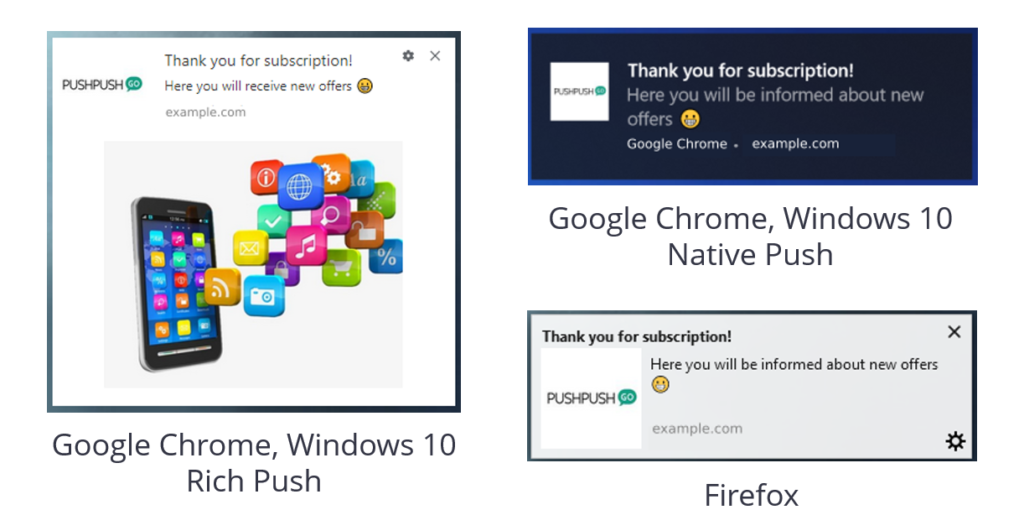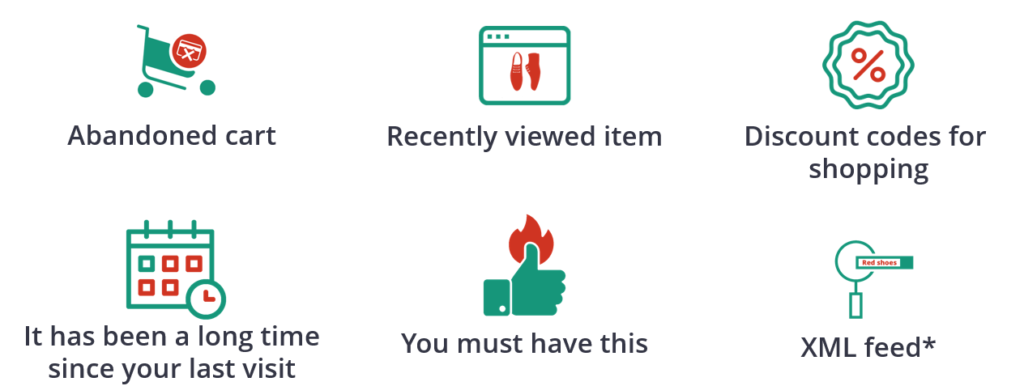Easy e-commerce. How to stop losing customers and fully unveil the sales potential of your online store?
Written by
Kinga EdwardsPublished on

According to the Baymard Institute’s report, almost 70% of carts are abandoned. That means that 7 out of 10 purchases are not completed.
There can be a lot of reasons why people abandon their carts but among the most common are:
- they are forced to create an account in order to buy something;
- the checkout process is too complicated;
- they treat carts like the wishlist;
- the delivery cost is too expensive;
- they are not sure about the purchase, still thinking about other alternatives.
The second serious problem is the low return rate. 40% of the online store’s revenue is generated by the repeated customers and only 8% of website visitors come back again.
Why so many customers do not come back? Every situation is individual and it is not possible to list all the reasons, however, the most popular are:
- negative experience with the store during the first purchase: delivery was too slow, customer service was unsatisfied etc.;
- the product didn’t meet expectations;
- a customer doesn’t need a new item (or he thinks he doesn’t need it);
- lack of effective communication between an online store and the customer.
In line with abandoned carts and low return rate, another obstacle for the e-commerce business is the attention span. If in the 2000s the attention span of the average human being was 12 seconds, nowadays it is only 8 seconds. Comparing the attention span of the goldfish is 9 seconds.

In addition, the average concentration time of adults and teenagers on a specific process takes max. 20 minutes. So, you need to remember – you have only 8 seconds to attract user’s attention and in case if the customer abandoned the cart, there are only 20 minutes to take some actions and convince him/her to finish the purchase process. Of course, the customer can do it later as well, but with every additional minute, the chances are getting significantly lower.
So, what can we do? How to reduce the negative influence of these factors?
Web push notification for e-commerce
Web push notification is quite new technology that can help to overcome those obstacles.

Web push or browser notification is a permission-based marketing tool that enables to send short messages to the subscriber directly to their desktops/mobile screens even if the user is on the website of your competitor.
It’s main features are:
- GDPR-friendly: doesn’t collect any personal data;
- does not collect cookies;
- resistant to Adblock;
- enable to track user’s behaviour on the web page;
- works on Mobile, Desktop and Tablet.

There are 2 types of campaigns that you can send with the help of web push notifications:
- manual campaign;
- automation campaign.
Manual web push campaigns
A manual campaign is sent to the whole database of subscribers or to a targeted group and is accordingly divided into mass and targeted campaigns. An average CTR (Click-Through-Rate) of manual campaigns is 10,27%.

Web push automation
According to Econsultancy on every $92 spent on generating traffic to the website, only $1 goes on converting those traffic into customers. As a result, only 22% of companies are satisfied with their conversion rate. What is not a big surprise.
That’s why it is really important to focus on improving the user’s experience on your site that will help to turn prospects into customers. A lot of factors can influence it… However, fast and effective actions in the response of the user’s behaviour on the web page is a real competitive advantage. For example, SalesForce found that 62% of consumers expect companies to send personalised offers or discounts and web push automation can fulfil this need.
So, what is the web push automation?
It is an automatic notification/sequence of messages that is/are sent in the response of a particular trigger, for example, abandoned cart, completed purchase etc. An average CTR of such campaigns is 17,29%. As a result, due to its personalization, web push automation has 7% higher CTR than mass campaigns and is more efficient.
Track, tag, target
In order to be able to use automation, firstly, we need to track user’s actions, assign the appropriate tags and after target them with the right message.
So, what kind of subscriber’s actions we can track and tag?
- categories or even particular products that the person visited since the time he is your subscriber or categories that were visited during the last X days;
- monitor the purchase path, as a result, you can know exactly at which moment the cart was abandoned and react with an appropriate notification that will encourage a person to complete the purchase. Besides, the received information might help to identify the bottlenecks of your sales process and fix it;
- collect information about the purchase such as the value of the basket, number of items in the basket or track action button clicks;
- date of the last visit;
- number of visits within X days;
- visited subpages.
Web push automation scenarios

To use the full potential of web push notification technology make sure you implemented at least some of these scenarios.
Abandoned Cart
An abandoned cart is one of the main pain points for every e-commerce business. This scenario will help you to decrease the number of forgotten shopping carts in your online store.

How does it work in practice?
- A person enters the website.
- Adds something to the cart BUT abandon it.
- Some time passes…
- …and the customer forgets about his/her cart.
- At this moment an automatic message is sent (Pic. 7).
- The user remembers about the cart.
- He/She completes the purchase.

The effectiveness of this scenario is proven by many companies that already use it. For example, CTR is one of the highest among web push notification scenarios and reaches 20%.
Recently viewed item
Possibility to track visited subpages, categories or particular products allows to realize “Recently viewed item” scenario.

- A user enters the website.
- He/she looks for new shoes BUT don’t buy anything.
- After X minutes/ hours/ days…
- …an automatic reminder with the information about an item the user was looking (Pic. 9) is sent.
- The customer successfully buys new shoes.

An average CTR for this scenario is 14%.
It has been a long time since your last visit
This scenario gives an opportunity to send a web push notification to those users that didn’t come back to your website for a long time.

- A user visits your website.
- Don’t go back there for more than 7 / 21 / 30 / … X days.
- Automatically gets web push reminder (Pic. 11).
- The user enters your website.

CTR is about 16%.
Discount codes for shopping
Web push notifications might be used not only for sales but also to build loyalty by awarding the most dedicated customers with promo-codes. Moreover, you can use this feature to increase the database of the subscribers by promising a discount for the first purchase if the person signs up to web push.

- A user enters your website.
- He makes a purchase…
- …and leaves your online store.
- After X days…
- …you send an automatic message with a discount code for the next shopping (Pic. 5).
- As a result, if the customer had a positive experience with your online store, there are high chances he/she will redeem his/her coupon.

People adore good deals, therefore, an average CTR for this scenario is 21%.
You must have it!
This is a simple scenario that consists of two steps. It allows to inform customers about the new collection, the hottest deals or any other news that might be valuable for your subscribers.

- A user enters your website.
- He gets a web push notification with information about the new collection (Pic. 15).

In average 12% of subscribers click on this notification.
XML feed. More personalization!
Although this scenario requires additional technical support it has a lot of advantages. Thanks to it you will be able:
- to send web push notification images of the product the user was checking;
- to send notifications with the number of available items in stock and motivate to the purchase if a particular product is going to end;
- to send a web push notification with a similar item if the one the user was interested in is no longer available.
And all of these will be sent automatically without any need of your supervision!
The XML scenario requires the XML feed that the website developer needs to prepare on his end. It is a list of all products that are visible on the store’s website. There is info about availability, name, price, etc. This feed is sent to the web push provider’s IT (like PushPushGo), who parse this feed with the app. Based on the created facade, we prepare more personalized automation scenarios.
XML feed has a lot of possibilities and, basically, you can implement any idea that will come up in your head. Here is an example of one of the possible scenarios that you can build with the help of XML feed.

- A user was looking for red shoes, pink dress or any other product in your online store.
- Unfortunately, he didn’t buy anything and left the website.
- After some time you can send a notification with an image of the item the customer was checking (Pic. 17).
- The customer makes a purchase.

Due to its high personalization web push notifications based on the XML feed scenario have an average CTR that equals 26%.
Wrapping up
The vast majority of online stores don’t use its full potential and only due to abandoned carts companies lose about $18 billion each year. Although web push notification is still young technology it has already proved its effectiveness. I showed you just a few examples of how it can be used and depending on the specification of your business you can build more advanced web push automation scenarios.
Don’t use web push notifications yet? Test it for 14 days for free: Click.
Maybe this is something you were looking for to increase sales, overcome your competitors and grow your online business?


